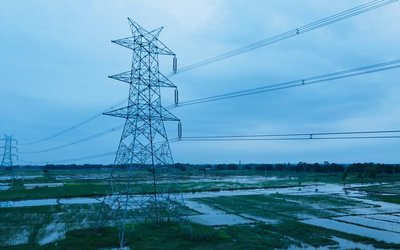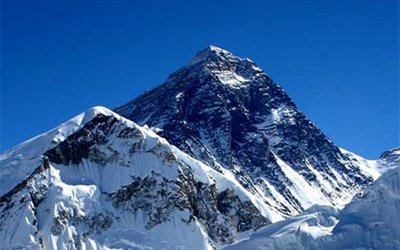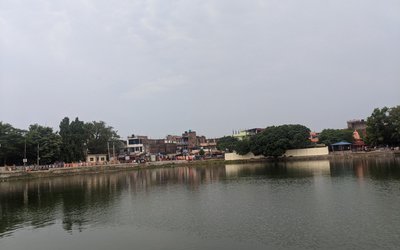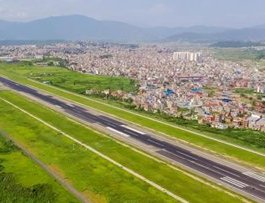
Despite being a clear day landings on the afternoon of May 10 became difficult because of strong tailwinds that were beyond most jets safe operational limit. Some airlines opted to hold long, while others chose to divert sooner. One, wide body, making an inordinately long holding loop was going low on fuel and intended to divert after its 13th or so rounds. It was able to land as the winds calmed a bit. Generally, TIA tends to have calm to mild winds around the year. The situation created difficulty as, first, the wind was strong (over 20 knots) and worse, it blew in the direction (210°)close to TIA’s 200°/020° runway orientation. As per, a retired compatriot captain, 10kts tailwind is the limit for landing a wide body.
It is ideal, for any type of aircraft, big or small, to land and take-off against the wind. But that is rarely possible and even more difficult for an airport with a single runway. Airports with two intersecting runways can cope better. Chicago's O’Hare has eight runways, laid in two sets of three parallel runways and two more on top of that. It is just bewildering to imagine how Chicago runs while it is difficult managing a few hours of strong wind here?
Even take-off with a tailwind is not good either, as it needs more runway length to attain higher ground speed before lifting off. Tailwind at cruising altitude is loved as it helps them to arrive at their destination faster, saving fuel and time. For example, RA433 to Narita may take as short as six hours, while the return flight may be close to nine hours. All this depends on the season of the year and how the high-altitude jet stream blows. As such, long-haul flights often try to make the best use of weather/wind information before finalizing their flight plan. It is much simple to do so over oceanic regions than over landmass, simply because no country owns the oceanic airspace.
Strong tailwind is taken with serious caution because it increases the ground speed, something this is not desirable while landing. Besides, it also increases the rate of descent, which is, again, not good during the approach phase. And may also result in missing runway touchdown marks, making aircraft eat more runway. The length of the runway up front is a precious commodity and has to be used wisely. A 20kts tailwind, like that day, would make landing that much faster compared to that in a calm environment and would result in taking longer to stop. Worse, it can even result in a runway overrun.
Landing with a tailwind and on a wet runway is the worst possible combination because of reduced runway friction. In a text bookcase, Air India Express (IX812/B737/2010) landed in a similar situation at the Kozhikode airport ending with 158 fatalities. Kozhikode airport is on a precarious tabletop location with a vertical drop of over 200ft all around.TIA is not as bad, but it also has a drop on the northern side as the terrain drops to Bagmati. Imagine a widebody, with a blotched landing, ending there.
One might wonder why the flights were not told to land from the northern end (20)that day? That would have been the right thing to do. Presently, most jets prefer‘02’ for landing and ‘20’ for take-offs. But it was normal for jets to land from '20' at times, TIA had a shorter runway. Not just DC9s but even larger DC8s of Thai landed that way. It was only after the runway extension and establishment of VOR/DME that made '02' all too dominating. Thereafter, the straight-in approach became the norm, with landings from '20'got eclipsed. Undisputedly, straight in '02'landing is much simpler and it does not require making a full semicircle turn (180°) while descending in a narrow area as at '20'.
TIA also offers a satellite-based or more reliable RNP-AR approach for landings. But here again'02'is seems to have an overpowering edge over '20'. Runway '20' was designed only in 2021 while it was nine years earlier for '02'. These procedures are said to provide a comfortable glide slope of 2.8°against 5.3° for VOR, and a navigation accuracy of 0.3 nautical mile. Just wondering if any airline has ever made a runway '20'RNP-AR landing approach since it became effective a year ago? I think not, as understood no airline has ever sought authorization, thus far, to do that.
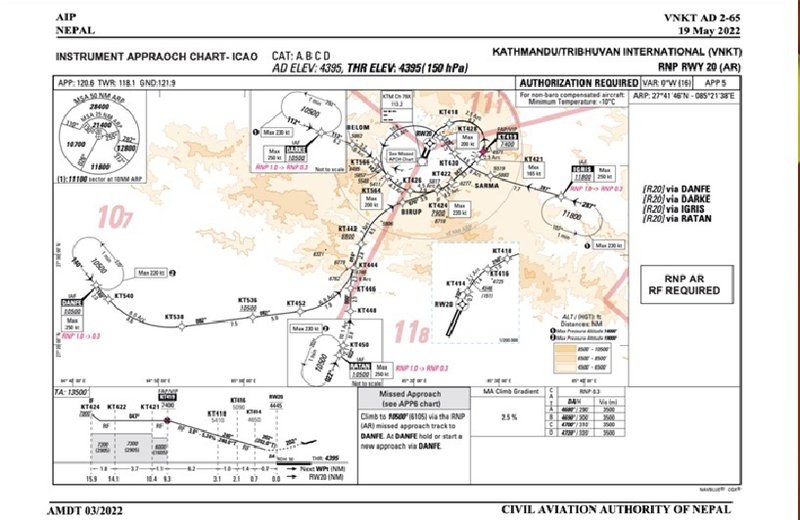
Airlines are showing extreme apathy toward using '20' for landings even when that would have been the right thing to do. As TIA has very limited options, being stubbornly stuck to one particular landing and take-off pattern does not bode well for any airline and it is not good for TIA either.
On the other side, limited option airports like TIA have to be a little more unbending in imposing their instructions minding the interests of all airlines. And in this regard, keeping TIA at its best performance level should be the sole objective. And airlines should be told, in no uncertain terms, to use '20' take-off and even instruct to go for '20' RNP-ARfor landing when it suits TIA’s operation. Just tell them to divert away, not clutter the narrow holding space, otherwise. While CAAN was bold enough to have decreed airlines to add flights to/from Bhairahawa, it can surely put its foot down in nudging all airlines frequenting TIA to take up landing from the '20' end with increased seriousness. It is time for CAAN to put its foot down firmly, come what may.
Arjyal can be reached at harjyal@yahoo.com
- Tailwind Or No Tailwind
- Mar 18, 2024
- The Knockout Punch : Pokhara Crash Investigation Report
- Jan 05, 2024
- Kabadi’s Bi-cycle
- Aug 31, 2023
- Long Wait To Catch Something, Someday
- Aug 23, 2023
- Coughing Engine And Arrogant Ways
- May 04, 2023




